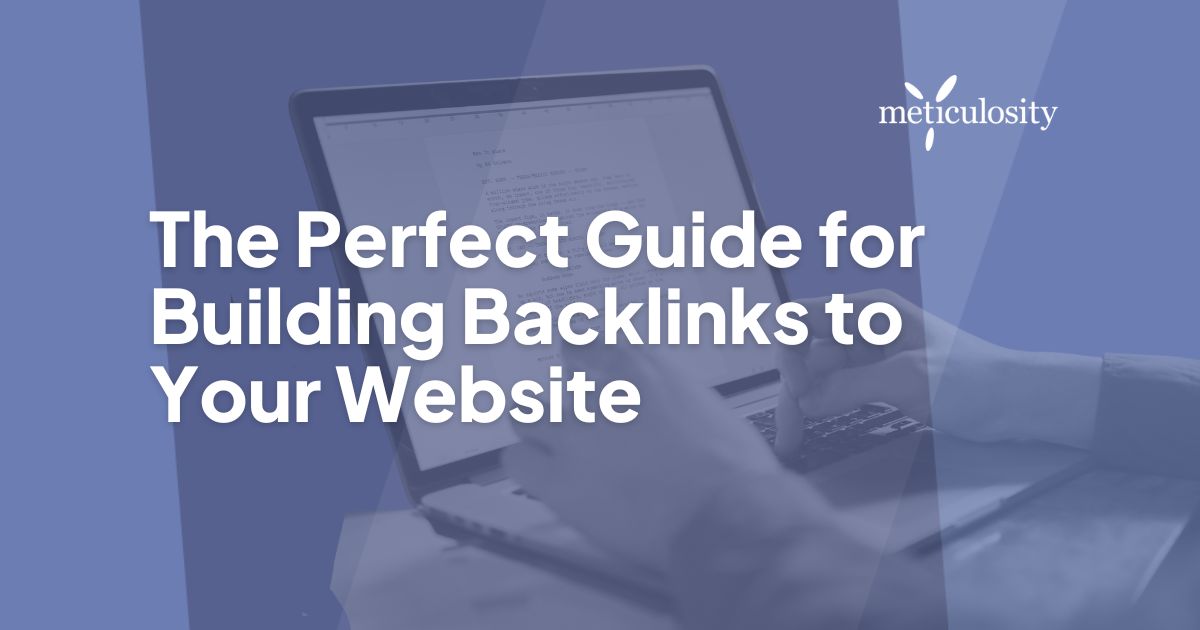In this guide, we’ll show you how to get links to your website and explore how they can bring your site to the top of search engine rankings.
1. Become Familiar with Google Webmaster Guidelines
Before you find backlinks, it's important to review Google's Webmaster Guidelines. The search engine’s algorithm allows it to filter out spam and low-quality links, downgrading websites that participate in problematic link networking or buying. Google’s Webmaster Guidelines recommend that marketers avoid the following practices when generating content:
- Creating pages that lack original content or contain hardly any content
- Hiding text or links within a page, including text in font size 0
- Purposely deceiving users and search engines through “cloaking” or other methods
2. Why Disavowing Backlinks Are Important
Even if your site is producing excellent content, it may be penalized due to poor content on other websites. Fortunately, a disavowing backlink can help you avoid this issue. If you use Google Search Console, you can identify the sites you wish to disavow and then upload a list to the tool.
While we still disavow links for sites under a Google Penalty Action, we find it less necessary in a post-Penguin Era. This MOZ disavows article explains in more detail.
3. Identify Gaps in Your Site’s Content
No matter how much you’ve written, there are always new opportunities for content. When you find the gaps in your content, you can bring a fresh perspective to your site and establish further authority in your field.
Performing a full site audit with SEO tools can be useful when looking for new content ideas. You can also use keyword research tools to determine what words and phrases appeal to your target audience.
4. Research Similar Sites with High Domain Authority
While you shouldn’t seek out direct competitors, getting backlinks from comparable sites may help you boost your page rankings. When looking for these websites, use metrics like organic reach and engagement factors like the bounce rate, daily page views, and top keywords.
These metrics can help you determine whether these sites will be useful for backlinking. They can also help you narrow down which sites will generate and retain the highest number of links and pass the greatest link juice.
5. Suggest Content Ideas to Relevant Sites
After you’ve identified which sites are best for backlinking, it’s time to pitch your content. First, find out whether the chosen site will allow you to post links to your website.
It’s also important to read existing content on the site to ensure your content fits its audience and style. Once you’ve found websites similar to yours, you can contact the company and provide a finished guest post or submit a content idea.
6. Establish Media Partnerships
Creating a media partnership allows you to provide content to other websites without having to pitch content. Typically, high-authority sites will expect traffic-driving, well-crafted content.
If you believe your content fits the bill, contact the potential partner and explain what your company offers. It’s also helpful to provide examples of your content and any associated metrics, such as high traffic volumes or mentions from industry leaders.
While forming a partnership can take some time, the exposure opportunities can make the time commitment worth it.
7. Generate More Visual Content
When exploring how to get links to your website, you may be focusing on text-only content. However, visual content can be extremely helpful in boosting your external links. In fact, infographics and videos are 30 times more likely to be viewed. Try incorporating some of these items into your SEO content strategy.
/Imported_Blog_Media/Blog-Mistake-3-550x367-4.jpg?width=550&height=367&name=Blog-Mistake-3-550x367-4.jpg)
8. Use Press Releases
If your company wishes to take an old-fashioned approach to media outreach, consider pitching your content to a press release website. Many of these sites have free tools and paid distribution packages that can help you increase your site’s exposure and find backlinks.
Press releases can also be directly sent to media outlets if your company wishes to avoid the costs associated with using a distribution package.
9. Record Site Mentions
Tracking website mentions allows you to find out whether other pages are actually linking to your site. Using an RSS feed service like Google News allows you to observe which sites mention your blogs or other content.
The tool also allows you to set up an email alert for keywords, including the name of your site or a certain product. When you find sites that don’t link back to you, contact the webmaster or media director to see if you can get backlinks.
10. Utilize a Backlink Checker
If you’ve been using the above steps to get backlinks, ensuring they’re producing the desired results is essential.
A backlink checker measures several different variables, including the backlink total, where the traffic originated, how many visitors were generated from the backlink, and which pieces of content were the most popular.
This allows you to rethink your keywords or content topics, which is important when improving your inbound marketing strategy.






